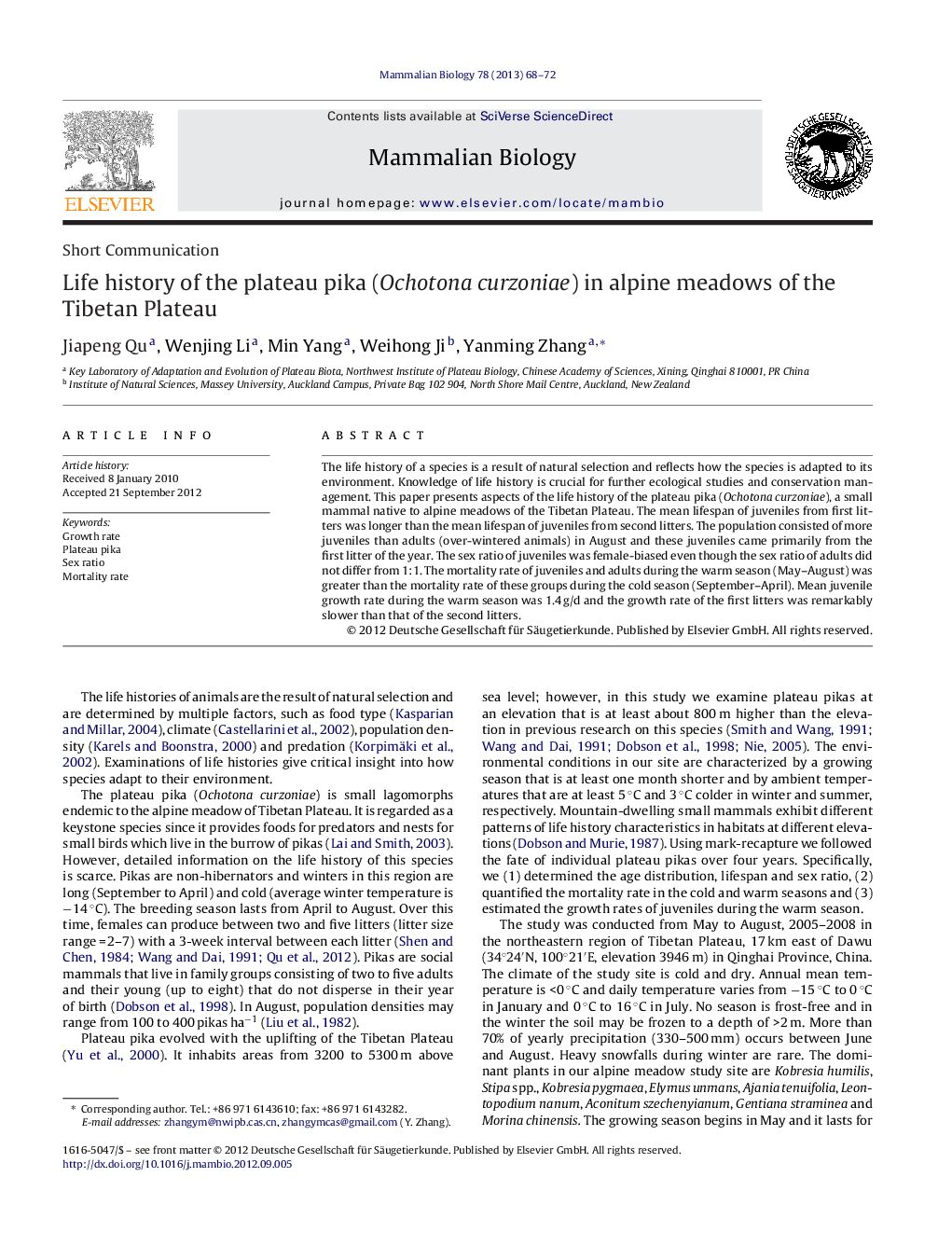| Article ID | Journal | Published Year | Pages | File Type |
|---|---|---|---|---|
| 2193700 | Mammalian Biology - Zeitschrift für Säugetierkunde | 2013 | 5 Pages |
The life history of a species is a result of natural selection and reflects how the species is adapted to its environment. Knowledge of life history is crucial for further ecological studies and conservation management. This paper presents aspects of the life history of the plateau pika (Ochotona curzoniae), a small mammal native to alpine meadows of the Tibetan Plateau. The mean lifespan of juveniles from first litters was longer than the mean lifespan of juveniles from second litters. The population consisted of more juveniles than adults (over-wintered animals) in August and these juveniles came primarily from the first litter of the year. The sex ratio of juveniles was female-biased even though the sex ratio of adults did not differ from 1:1. The mortality rate of juveniles and adults during the warm season (May–August) was greater than the mortality rate of these groups during the cold season (September–April). Mean juvenile growth rate during the warm season was 1.4 g/d and the growth rate of the first litters was remarkably slower than that of the second litters.
